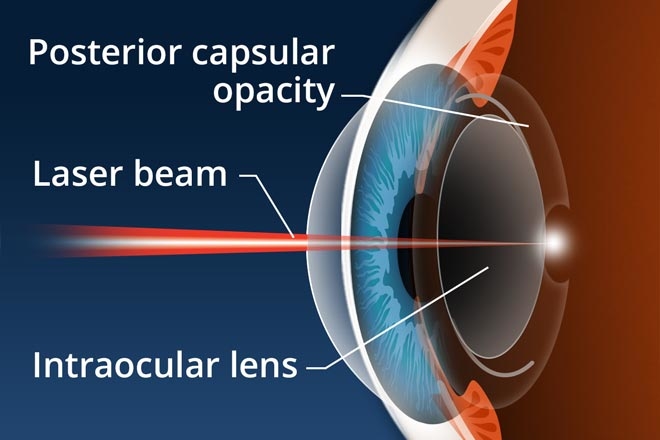 Windsor Clinic: 0800 644 0700 -
Reading Clinic: 0800 644 0900
tannereyes@sapphire-eyecare.co.uk
Windsor Clinic: 0800 644 0700 -
Reading Clinic: 0800 644 0900
tannereyes@sapphire-eyecare.co.uk
 Windsor Clinic: 0800 644 0700 -
Reading Clinic: 0800 644 0900
tannereyes@sapphire-eyecare.co.uk
Windsor Clinic: 0800 644 0700 -
Reading Clinic: 0800 644 0900
tannereyes@sapphire-eyecare.co.uk

The posterior capsule is the fine membrane behind your natural lens, which is left in the eye to support your artificial lens implant following cataract surgery. In approximately 10% of patients, the transparent membrane becomes thickened, causing a gradual reduction in vision. This can occur months to years after surgery.
The purpose of a laser treatment (capsulotomy) is to create an opening in the cloudy membrane in order to restore vision with the intention of improving your eyesight. The laser procedure itself is extremely quick and easy lasting only a few minutes. It is carried out in an outpatient setting with some anaesthetic drops on the surface of your eye. Most people notice significant improvement within 24 hours and sometimes, almost immediately. Procedure is painless and very similar to being examined on a slit lamp which most patients will be familiar with.

As with any procedure, laser treatment has risks. Improvement in eyesight cannot be guaranteed although serious complications are very rare.
The main risks of laser capsulotomy are:
Retinal detachment – the retina, which is the inner lining of the eye, can become detached. If untreated, this can lead to reduced or complete loss of eyesight, but if detected early it can usually be successfully treated. The incidence of retinal detachment after laser capsulotomy is less that 1%.
Macular oedema – the retina can become swollen causing blurring of vision. This can be treated medically but may take several weeks to improve. The chance of macular oedema after laser capsulotomy approximately 1%, but may be higher in diabetics.
Persistent floaters which interfere with your vision – Very occasionally people may request surgery to remove the floaters but this is usually not necessary.
Worsening of glaucoma or causing glaucoma (raised pressure) in the eye. This usually can be medically treated.
Loss of vision – extremely rare less than 0.1%
After your treatment Your vision will be blurred after the treatment, but should improve over the following few hours.
Commonly you may notice floaters, but these tend to settle within the first few weeks.
If you experience a sudden shower of floaters, flashes of light in the eye, or the feeling of a curtain coming over your vision, you should contact us as, rarely, this may indicate a retinal detachment.
You should also contact us if you experience pain or and loss of vision after the laser treatment.
Most patients do not require a further follow up after the procedure.
You may resume driving the following day.
You may visit the optician a week after the treatment to check if your glasses need changing.
Disclaimer : The information provided in this website is intended as a useful aid to general practitioners, optometrists and patients. It is impossible to diagnose and treat patients adequately without a thorough eye examination by a qualified ophthalmologist, optometrist or your general practitioner. Hopefully the information will be of use prior to and following a consultation which it supplements and does not replace.


